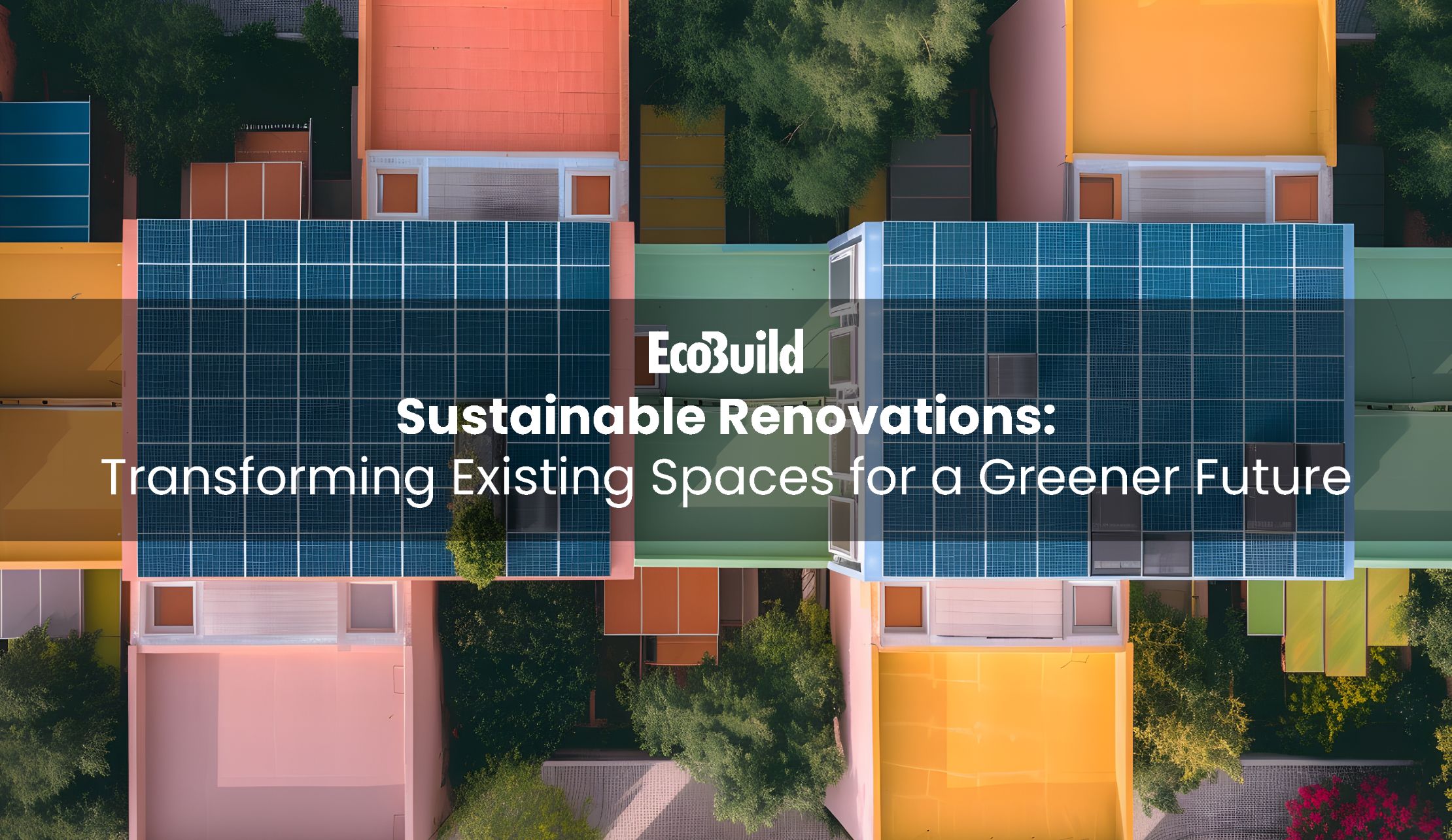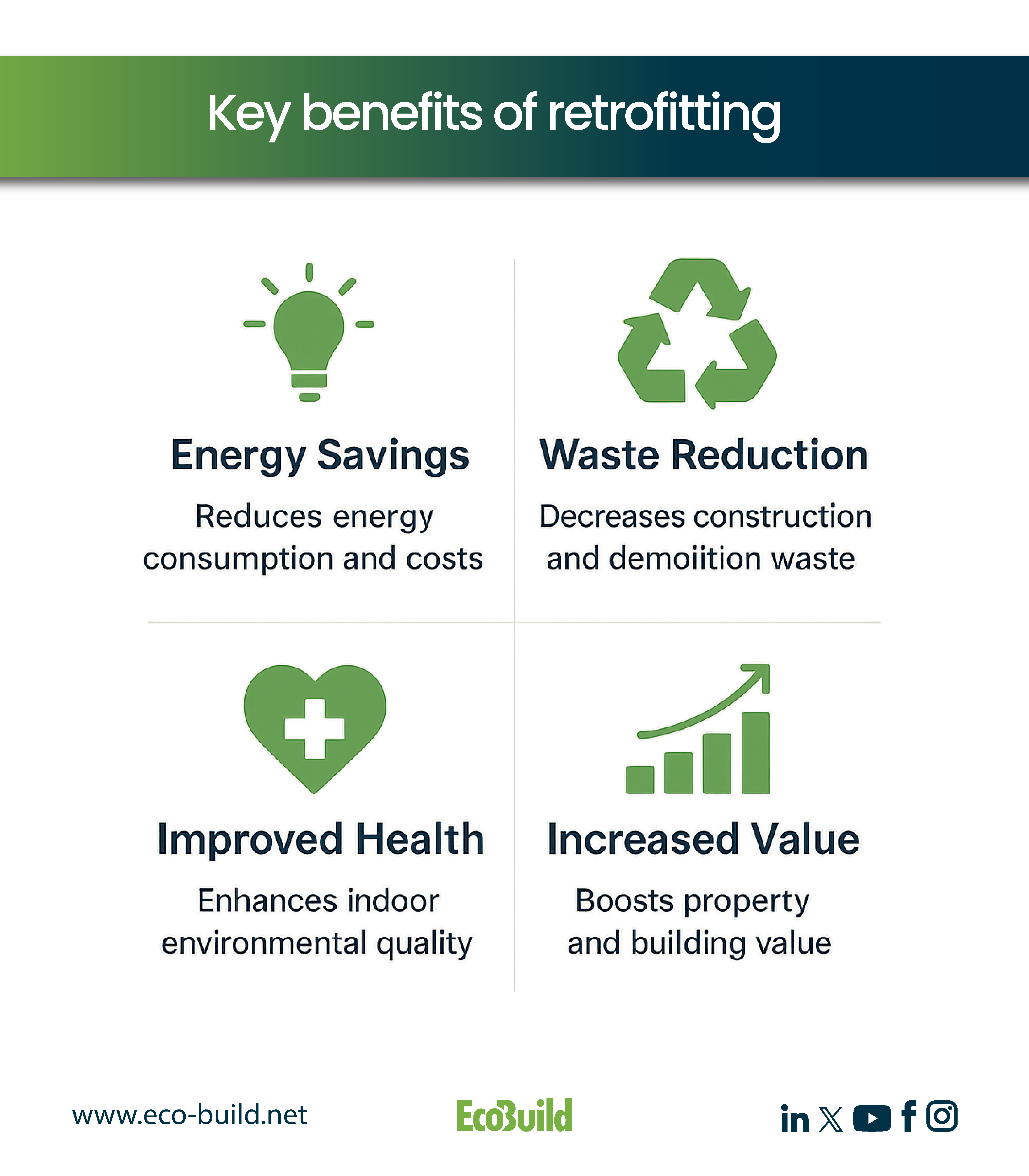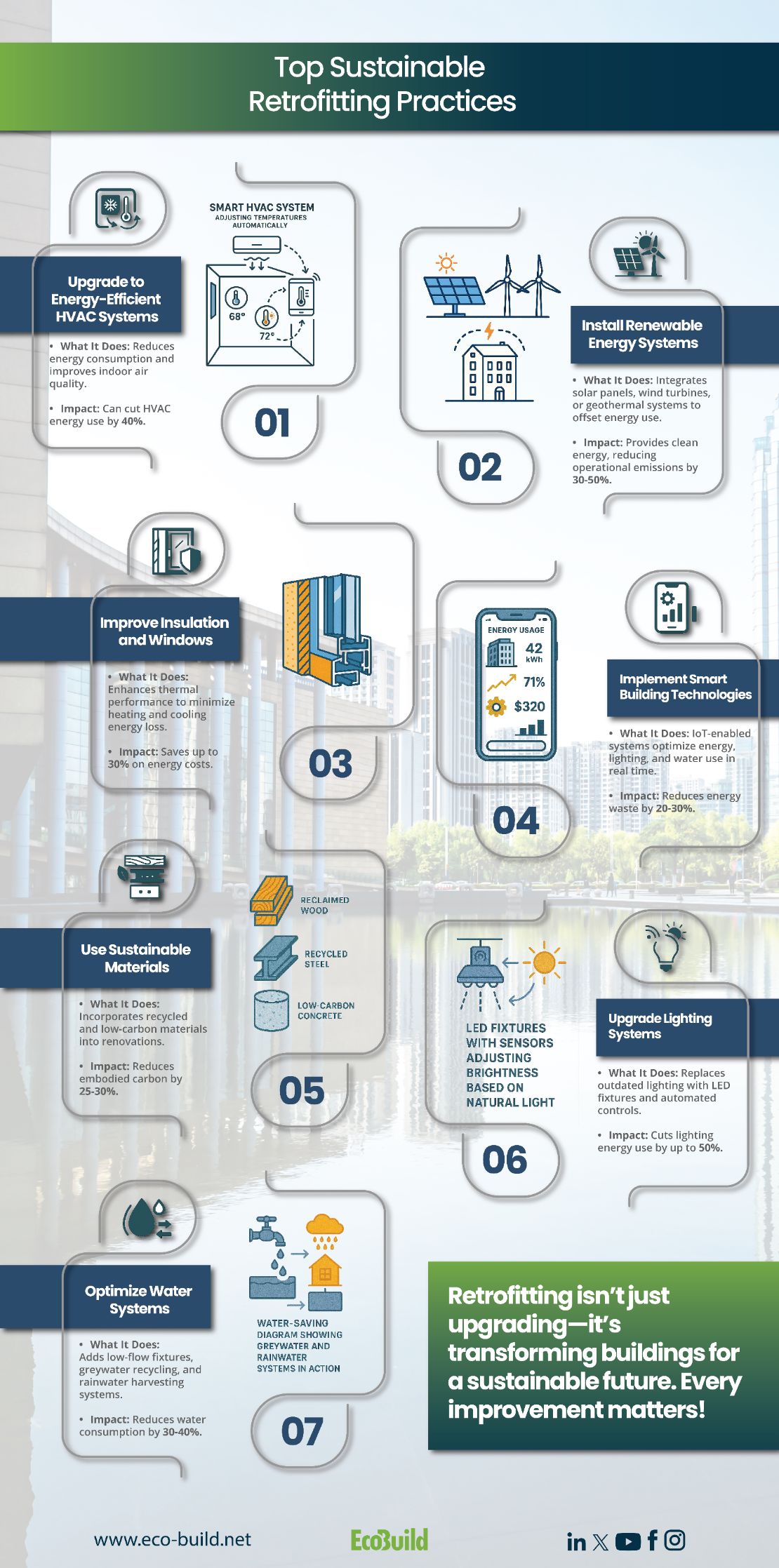
INSIGHT MAY 07, 2025
Sustainable Renovations: Transforming Existing Spaces for a Greener Future
At ECOBUILD, we believe that sustainable renovations are not just a necessity—they’re an opportunity to reduce emissions, improve efficiency, and extend the lifespan of buildings. In this blog, we’ll explore how retrofitting and renovations can transform existing spaces into greener, more efficient environments.
With ambitious goals and a focus on impactful initiatives, we are empowering our clients, partners, and communities to build a sustainable tomorrow—starting today.
WHAT ARE SUSTAINABLE RENOVATIONS?
Sustainable renovations involve upgrading existing buildings to improve their energy performance, reduce waste, and enhance occupant wellbeing. This can include:
- Energy-Efficient Upgrades: Installing energy-saving systems like smart HVAC and LED lighting.
- Material Reuse: Incorporating recycled and reclaimed materials to minimize embodied carbon.
- Water Conservation Measures: Adding low-flow fixtures and rainwater harvesting systems.
- Indoor Environmental Quality Enhancements: Improving air quality, natural lighting, and thermal comfort.
WHY RETROFITTING EXISTING BUILDINGS IS CRITICAL?
1. Reducing Operational Carbon:
- Older buildings often rely on inefficient systems that consume excessive energy.
- Solution: Upgrade to energy-efficient technologies like high-performance insulation and renewable energy systems.
- Impact: Retrofitting can reduce energy use by up to 50%, significantly cutting emissions.
- Renovations reduce the need for demolition and new construction, conserving materials and minimizing waste.
- Solution: Reuse structural components and source recycled materials like reclaimed wood and recycled steel.
- Impact: This approach supports circular economy principles, reducing the environmental impact of construction.
- Renovations can prepare buildings for future challenges like climate change and extreme weather.
- Solution: Incorporate flood-resilient designs, green roofs, and permeable pavements.
- Impact: Climate-adapted buildings protect occupants and reduce long-term repair costs.
- Poor indoor air quality and inadequate lighting can negatively impact health and productivity.
- Solution: Add biophilic design elements like indoor plants, optimize ventilation, and maximize natural light.
- Impact: Renovations focused on well-being can boost occupant satisfaction and productivity by 15-20%.

KEY STRATEGIES FOR SUSTAINABLE RENOVATIONS
1. Conduct an Energy Audit:
- What It Does: Identifies inefficiencies and prioritizes areas for improvement.
- Example: An audit may reveal opportunities to upgrade HVAC systems or add solar panels.
- Result: Energy audits provide a roadmap for reducing operational energy.
- What It Does: IoT-enabled devices monitor and optimize energy, water, and resource use in real time.
- Example: Smart thermostats and lighting systems adjust based on occupancy and daylight.
- Result: Reduces energy waste and enhances efficiency.
- What It Does: Low-carbon and recycled materials reduce embodied carbon.
- Example: Replacing traditional concrete with alternatives like fly-ash concrete.
- Result: Lowers lifecycle emissions and supports sustainable supply chains.
- What It Does: On-site renewable systems like solar panels and wind turbines offset energy use.
- Example: Rooftop solar installations that provide 30-50% of the building’s energy needs.
- Result: Moves the building closer to net-zero energy goals.
- What It Does: Improves air quality, acoustics, lighting, and thermal comfort.
- Example: Installing advanced air filtration systems and daylighting solutions.
- Result: Creates healthier, more comfortable spaces for occupants.

The Long-Term Benefits of Sustainable Renovations:
1. Cost Savings:
- Lower energy and water bills through efficiency improvements.
- Reduced maintenance and operational costs.
- Certified sustainable buildings command higher market value and attract eco-conscious tenants.
- Aligns with evolving sustainability mandates and unlocks incentives like tax credits and grants.
- Significant reductions in carbon emissions and waste contribute to global sustainability goals.
Conclusion: Retrofitting for a Greener Future
Sustainable renovations are a powerful way to breathe new life into existing buildings while addressing the urgent need for climate action. By reducing emissions, conserving resources, and enhancing occupant wellbeing, retrofitting is an essential strategy for creating a more sustainable built environment.
💡 Let’s transform your building into a model of sustainability. Contact ECOBUILD today to explore our retrofitting and renovation services.
Learn More About Our Services
